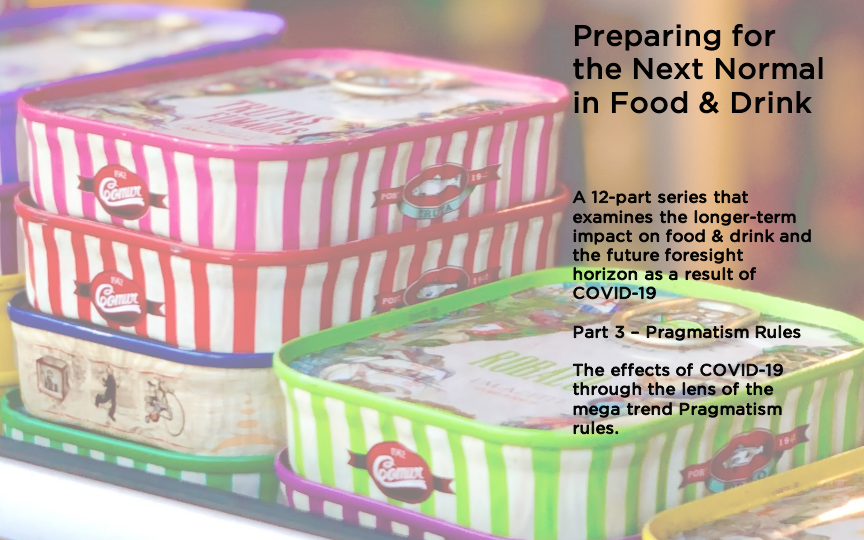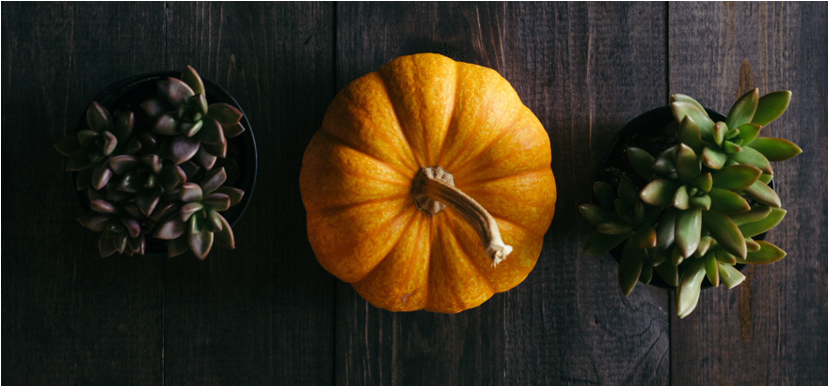
We're living in extraordinary times, the health of both people and planet are under pressure. Never has the need been greater to take a pragmatic view of the world of food and drink – what's wrong and what's to be fixed.
Waste Not:

As you can imagine, food waste has never been such a hot topic however, due to the sudden global pandemic we are currently going through, there has been an immediate and extreme impact on food supply chains. There have been so many fresh suppliers lose their customers overnight and with the abrupt closure of restaurants, bars and cafes, enormous amounts of perishable goods went to waste; however unwanted and left-over food was a huge problem long before COVID-19. There is approximately 100,000 tonnes of edible food that goes uneaten in the UK and estimates suggest that about a third of the worlds food actually goes to waste.
The need to combat 'throwaway' culture has never been stronger as we are faced with a weakened supply chain and the looming threat of a global recession, not just on an industrial level but in consumer homes too. Cautious customers are now taking much more of an interest in what they are throwing away and what they can do to reduce waste and cost. As consumers become more budget conscious the 'treat yourself' mantra has given way to a 'buy what you need not what you want' which leads into greater levels of meal planning again against a price and waste agenda. There has been a huge push on social media for homes to use much more of their so-called scraps such as peelings, overripe fruit and 'end slices' on loaves of bread. People are also being encouraged to shop and eat seasonally and locally in the crusade to reduce food waste as well as promoting self-sufficient food supply chains.
We also expect when the out of home sector emerges from lockdown that menus and dining options will be shorter to mitigate waste.
Rediscovered Freezer:

For years there's been a perception that the frozen food aisle in supermarkets is less appealing, perhaps unfashionable and unhealthy, however, recently, through packaging revolution, marketing & product development its old misconceptions are being shaken off. In addition to this frozen food is also being linked with a number of positives associations such as healthiness, eco-friendliness, quality, innovation and variety. Frozen food is actually starting to rival its fresh counter parts and the numbers are backing it up; Kantar reported that by the end of 2019 the frozen food market reached £6.8bn with reported growth of 3.4% actually making it the fastest growing grocery category.
When lockdown measures were introduced all over the UK, bulk buying mania started however it wasn't just pasta, tinned food and toilet rolls that sold out, freezers were snapped up too! Consumers were looking for alternative ways to store food at home and the freezer was number one choice; not just to have in stock a contingency in place but batch cooking was on the up as well as freezing fruit/veg for smoothies and leftover produce soup.
We expect the appeal of frozen food to remain, with its versatility, stability and relative 'sterility' as well as the previously mentioned attributes of health, quality and innovation. The need to plan meals forward and have contingency options will remain a key consumer need into the future.
Also expect a growth in the relevance of premium / global frozen foods and ingredients that in many cases actually favour the frozen formats such as dim sum or gyoza as examples.
As our work patterns change there is likely to be an opportunity for frozen foods in non-traditional day parts.
Rediscovered Cupboard:

Even before the news that COVID-19 was a world pandemic and shoppers were sent into a bulk buying frenzy, dried goods such as pasta, beans and pulses were already growing in consumer interest for a number of reasons. Environmental concerns were a huge factor as dried goods last longer on shelves which of course helps with reducing food spoilage and waste. Tinned fish has also contributed to the 'rediscovered cupboard' and we are not just talking about tuna in brine. The trend has been cemented by restaurants and wine bars when they began serving Spanish conservas which were simple but oh-so-satisfying.
As consumers reply more and more on their pantries and store cupboards the perception that food has to be farm-fresh or expensive to be good is well on the way of going out the window.
As well as being stable and therefore convenient the access price points will favour those whose food spend capacity is reduced as a result of the COVID-19 led recession.
We expect to see more premium pantry ingredients as well as the rediscovery of one pot standbys and new ways with store cupboard staples as consumers explore the benefits of this new/old part of the store. There has also been an increase in the popularity of pickling, fermentation, 'gourmet' instant noodles and global ingredients such as tahini & miso.
Sustain to Thrive:

As environmental reports suggest that the world is at a climate change tipping point, sustainability has been at the forefront of people's minds. Scientists have warned us that we are facing a real threat to civilisation and we aren't just talking in the far-off future. According to WHO, air pollution is already a global public health crisis which is killing around 7 million people per year, however recent studies have also suggested that it could exacerbate the impact of COVID-19.
We must fix the most important thing in our lives, the planet; we don't have the option to just 're-build' another one and even though the global pandemic has so many negatives it has however shifted our priorities in doing this. There has been a change in what we are prioritising, for example, recycling/ plastic reduction has taken a backseat and health/ hygiene is now much more significant. There has also been a sudden improvement in air quality during lockdown which shows, that as a collective, our actions can have extremely positive results.
We are aware now more than ever about how all of our actions as individuals and businesses have a widespread impact but also how we are connected; this shows how the crisis may offer us some lessons about the kind of world we actually want to live in as a society.
Micro Seasons:

It is the natural evolution of farm-to-table and seasonal eating that is making the most of ingredients throughout each season and appreciating that the flavour and texture of fruits and vegetables evolve over time. For instance, potatoes will taste different in June vs August and young almonds in their green, soft, unripe glory are completely different from their mature, hard shelled counterparts. In addition, we expect to see a conversation emerge that links seasonality to changing flavour.
Historically customers may have had the expectation that menus and food ranges should remain constant throughout a season, however in recent times it has been acceptable to have some ingredients and dishes for only a few days or weeks at a time (especially in the case of top restaurants). This is definitely something that will become ever more common at a time when eating locally and seasonally has a renewed relevance and whilst farms are increasingly delivering fresh ingredients and products directly to the public.
Price Sensitivity:

As there is so much economic uncertainty at the moment it's inevitable that we will see change and evolution in consumer spending patterns over the coming months.
Reports suggest that there will be a certain rise in food costs for many reasons. Alongside labour shortages which have been a big topic in the news, there is import / export supply chain issues and of course social distancing measures that all impact the rise in food costs.
Social distancing has become a 'new normal' in our lives during the pandemic however it is affected businesses it a different ways; they are having to adapt to an increasing rise in online shopping plus the associated delivery costs, barriers in stores in addition to hygiene and cleaning costs. On the other hand, with the threat of a looming recession, consumers are not in the mood for the cost of food and of course other daily essentials to increase which will create a problematic pricing environment for restaurants and retailers; this is something that over time will need to be continually assessed.
We are only at the beginning of our journey when it comes to understanding the real impact that coronavirus is going to have and how it will affect both local and global economies.
There is however an opportunity in helping consumers to manage the available spend that they do have for food and drink in a supporting and pragmatic way to meet their needs that goes beyond traditional promotional mechanics. Thinking about budget/spend/meal calculations or bundling food to serve so many for a fixed cost.
In this article we've highlighted the shifts that are likely to persist post pandemic through the lens of Pragmatism. We expect to see a greater focus on food categories that offer the ability to plan but also deliver treat, quality and versatility such as frozen and ambient grocery. We expect seasonality to play a bigger part within our food lexicon as we connect more closely with domestic supply chains and the associated seasons. Lastly, we expect value, making money go further and mitigating waste to be at the forefront of consumers' minds. By considering these shifts and how you as a business, brand, start-up or entrepreneur, pivot and adapt in consideration of them, will mean that you're well positioned to succeed in the next normal in food and drink.
In article 4 we'll be looking at the health and wellness mega trend 'renew me' through the lens of the COVID-19 pandemic and the longer terms shifts that we expect to see manifest. Join our community for the details of article 4 and all the latest food and drink trends foresight – Click Here.